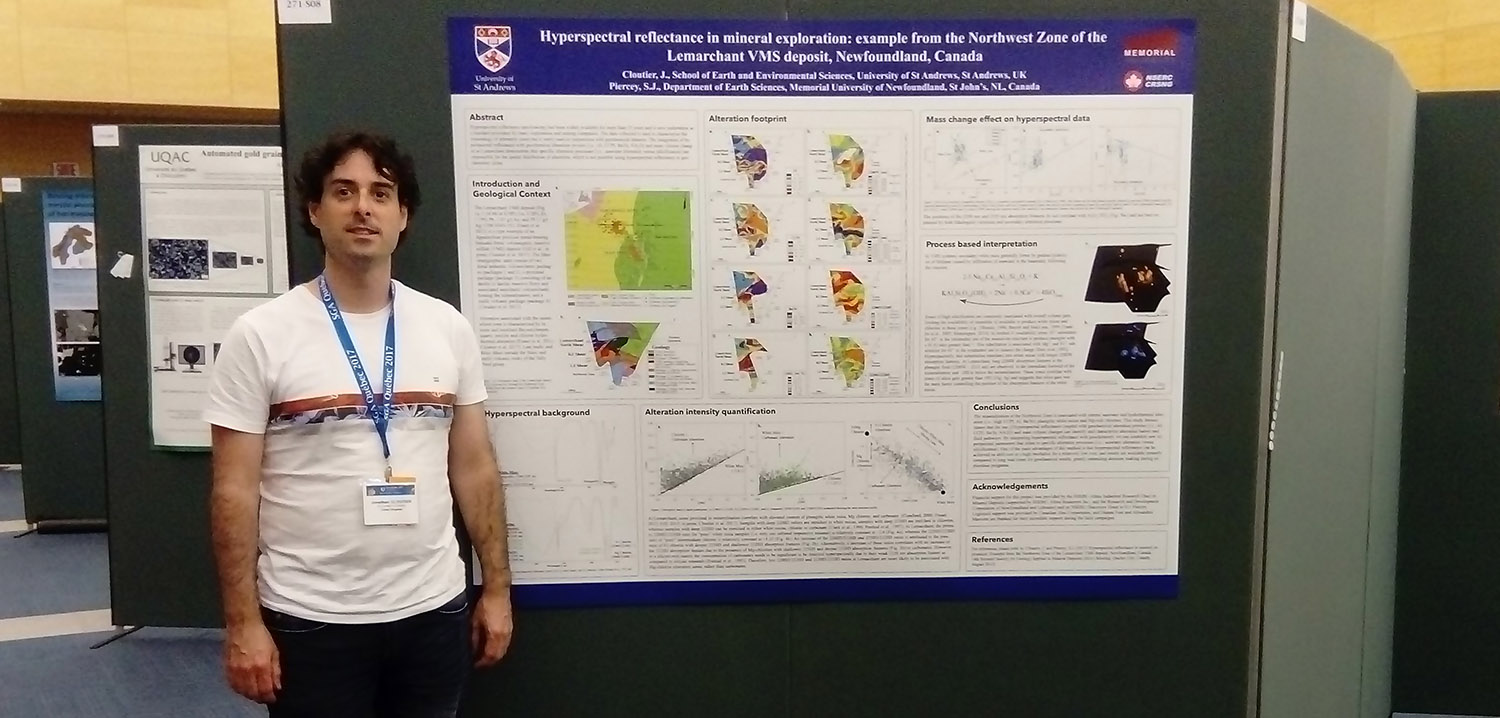Presentation at the SGA 2017
Hyperspectral reflectance in mineral exploration: example from the Northwest Zone of the Lemarchant VMS deposit, Newfoundland, Canada

Abstract: Hyperspectral reflectance spectroscopy has been widely available for more than 25 years and is now undertaken as a standard procedure by many exploration and mining companies. The data collected is used to characterize the mineralogy of alteration zones but is rarely used in conjunction with geochemical datasets. In this study, we integrate hyperspectral and whole rock geochemical datasets acquired at the Northwest Zone of the Lemarchant volcanogenic massive sulfide (VMS) deposit in order to determine the dominant formation processes and to establish new exploration parameters. The mineralization at the Northwest Zone is hosted in andesitic and dacitic rocks and exhibits intense hydrothermal alteration (e.g., high CCPI, AI and Ba/Sr lithogeochemical signatures) extending at least 300 m along strike of the andesitic and dacitic units. The alteration corridor has hyperspectral signatures that correlate with phengitic white micas with 2200W longer than 2215nm, and Mg-rich chlorites with 2250W shorter than 2252nm. The integration of hyperspectral reflectance, geochemical alteration proxies (i.e., AI, CCPI, Ba/Sr, NA2O) and mass volume changes has documented specific alteration processes responsible for the alteration (i.e., seawater alteration versus silicification), which is not possible using hyperspectral reflectance or geochemistry alone.
